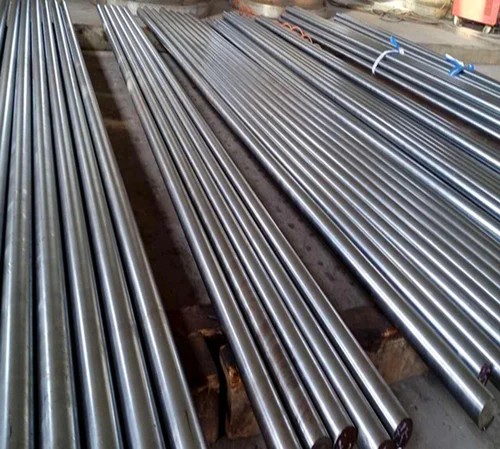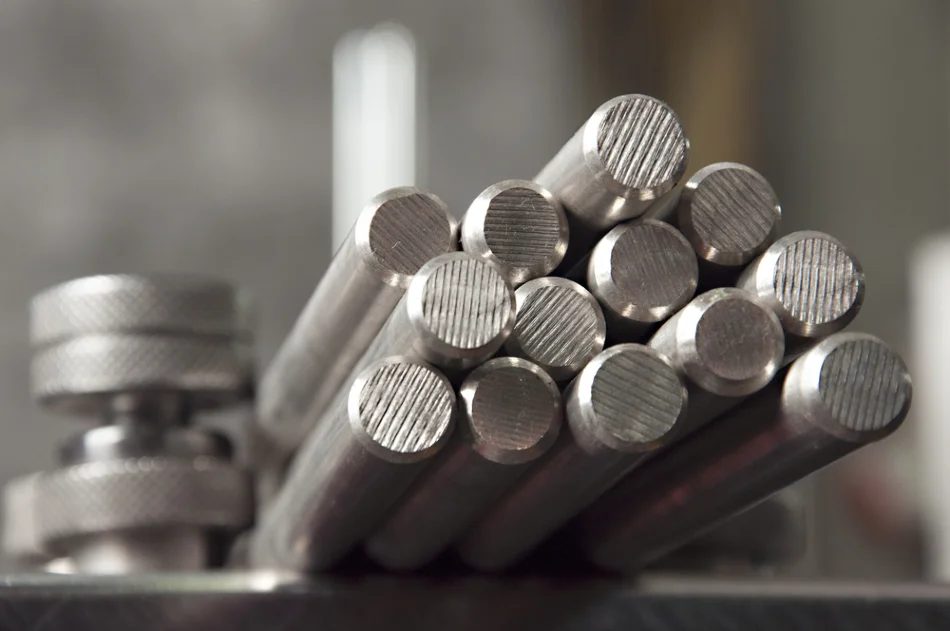Introduction to Stainless Steel
When it comes to stainless steel, there are a plethora of options available. But two grades that often find themselves in the spotlight are 430 and 304. While they may sound like code names for secret agents, these numbers actually represent different types of stainless steel alloys. So, what sets them apart? How do you know which one is right for your specific application or project? Well, fear not! In this blog post, we will delve into the world of stainless steel and explore the differences between these two popular grades: 430 Stainless Steel vs. 304 Stainless Steel. By the end of this article, you’ll have all the knowledge you need to make an informed decision about which grade best suits your needs. So put on your detective hat as we unravel the mysteries behind these fascinating alloys! Let’s jump right in!
Composition of 430 Stainless Steel

When it comes to understanding the differences between stainless steel grades, one of the key factors to consider is their composition. Let’s dive into the composition of 430 stainless steel.
430 stainless steel is a ferritic, straight chromium alloy that contains about 17% chromium. This makes it resistant to corrosion and oxidation, which lends itself well to applications in environments with high temperatures and humidity.
In addition to chromium, 430 stainless steel also contains small amounts of carbon, manganese, silicon, phosphorus, sulfur, and iron. These elements contribute to its overall strength and durability.
One important characteristic of 430 stainless steel is its magnetic properties. Unlike other types of stainless steel like austenitic grades such as 304 or 316, which are non-magnetic due to their crystal structure, 430 stainless steel exhibits magnetic behavior.
Due to its lower nickel content compared to other grades like 304 stainless steel (which typically contains around 8%), the cost of production for items made from 430 stainless steel tends to be more economical.
The composition of 430 stainless steel includes a significant amount of chromium along with various other elements that contribute to its strength and resistance against corrosion. Its magnetic properties make it suitable for certain applications where magnetism is desirable or necessary.
Composition of 304 Stainless Steel
304 stainless steel is an austenitic grade of stainless steel that contains a minimum of 18% chromium and 8% nickel. It also has small amounts of carbon, silicon, manganese, phosphorus, sulfur, and nitrogen. This combination of elements gives 304 stainless steel its unique properties.
The high chromium content in 304 stainless steel provides excellent corrosion resistance, making it suitable for use in various environments, including both indoor and outdoor applications. The addition of nickel enhances the corrosion resistance further and improves the overall strength and ductility of the material.
Carbon is present in a low amount to maintain good weldability while preventing sensitization to intergranular corrosion. Silicon helps improve oxidation resistance at high temperatures, while manganese contributes to the structure’s stability.
Phosphorus and sulfur are impurities that need to be controlled during production as they can affect the material’s mechanical properties. Nitrogen is added in small quantities to increase the strength levels without compromising on ductility.
The composition of 304 stainless steel makes it a versatile alloy with excellent corrosion resistance, high-temperature strength capabilities, and exceptional formability for various applications across industries such as food processing equipment, chemical containers, architectural structures, and automotive components.
Physical and Chemical Differences between 430 and 304
When comparing 430 stainless steel and 304 stainless steel, it’s important to understand their physical and chemical differences.
In terms of composition, both alloys contain iron as the main element, but they differ in their levels of chromium and nickel. 430 stainless steel contains less chromium than 304, which makes it more susceptible to corrosion in certain environments. On the other hand, 304 stainless steel contains higher amounts of chromium and nickel, giving it better resistance to corrosion and oxidation.
Another key difference is their magnetic properties. While both alloys are generally considered non-magnetic, 430 stainless steel exhibits some magnetic properties due to its higher ferrite content. In contrast, 304 stainless steel is usually non-magnetic.
Furthermore, these two alloys vary in terms of heat resistance. Although both can withstand high temperatures up to a certain extent, 304 stainless steel has superior heat resistance compared to 430.
Understanding the physical and chemical differences between these two types of stainless steel helps determine which alloy is best suited for specific applications or environments where corrosion resistance or heat resistance is crucial.
Applications and Uses for 430 Stainless Steel
When it comes to applications and uses, 430 stainless steel is a versatile material that finds its place in various industries. One prominent use of this grade is in the automotive industry, where it is commonly used for trim and molding components. Its corrosion resistance properties make it ideal for these applications, as it can withstand exposure to harsh weather conditions.
In addition to automotive applications, 430 stainless steel also sees use in the construction industry. It can be found in architectural trims, roofing panels, and even kitchen appliances such as sinks and countertops. The durability of this grade makes it suitable for both indoor and outdoor environments.
Another area where 430 stainless steel shines is in food processing equipment. Its resistance to oxidation makes it a reliable choice for manufacturing machinery used in food production facilities.
Furthermore, due to its magnetic properties, 430 stainless steel finds application in the production of solenoid valves and transformers.
The diverse range of applications for 430 stainless steel highlights its strength and versatility across multiple industries. Whether you’re looking for corrosion resistance or durability, this grade has got you covered!
Applications and Uses for 304 Stainless Steel
304 stainless steel is one of the most versatile and widely used materials in various industries. Its exceptional corrosion resistance, high strength, and excellent formability make it ideal for a wide range of applications.
One common use for 304 stainless steel is in the food processing industry. Due to its hygienic properties and resistance to corrosion from food acids, 304 stainless steel is commonly used to manufacture equipment like processing tanks, tubes, and storage containers.
In the architectural field, 304 stainless steel finds extensive use due to its aesthetic appeal and durability. It can be found in building exteriors such as façades, handrails, elevator doors, and decorative elements. Its ability to withstand harsh weather conditions makes it suitable for outdoor applications.
Another important application of 304 stainless steel is in the medical industry. It is often used for surgical instruments, implants, orthodontic brackets, needles, and other medical devices due to its biocompatibility and easy sterilization properties.
The automotive industry also relies on 304 stainless steel for components that require high strength along with good corrosion resistance. Exhaust systems, mufflers,
and fuel tanks are some examples where this alloy’s superior qualities are utilized.
Moreover,the chemical industry utilizes this material for manufacturing storage tanks,pipelines,and valves due to its resistance to corrosive chemicals.
Furthermore,it is frequently employed in the production of appliances such as refrigerators,dishwashers,stoves,and washing machines because of its rust-resistant properties.
With such diverse applications across multiple industries,it’s clear that 304 stainless steel offers countless benefits.Its versatility combined with excellent performance characteristics makes it a top choice for many professionals seeking reliable materials for their projects or products.
430 Stainless Steel vs. 304: Factors to Consider when Choosing Between 430 and 304

When it comes to choosing between 430 and 304 stainless steel, there are several factors that should be taken into consideration. One of the most important factors is the intended use or application of the stainless steel.
For example, if you are looking for a material that offers good corrosion resistance in mildly corrosive environments, then 304 stainless steel may be the better option. It contains higher levels of chromium and nickel compared to 430 stainless steel, making it more resistant to corrosion.
On the other hand, if cost is a major concern or if you need a material with good heat resistance, then 430 stainless steel might be more suitable. It is generally less expensive than 304 stainless steel and has better heat resistance capabilities.
Another factor to consider is the aesthetic appeal. If you want your finished product to have a shiny and polished appearance, then go for 304 stainless steel as it can be easily polished. However, if aesthetics are not as important and you prioritize cost-effectiveness, then consider using 430 stainless steel.
Additionally, availability may also play a role in your decision-making process. While both types of stainless steels are commonly available in various forms such as sheets or coils, there might be differences in stock availability depending on your location or supplier preferences.
It’s also worth considering any specific industry standards or regulations that apply to your project requirements. Some industries have specific guidelines regarding the type of materials that can be used for certain applications.
In conclusion, when deciding between 430 and 304 stainless steel options,consider factors such as corrosion resistance needs,cost considerations,heat resistance requirements,aesthetic preferences,availability constraints,and any industry-specific regulations.
By carefully evaluating these factors based on your unique situation and requirements you will be able to make an informed decision about which type of stainless steel is best suited for your project.
Conclusion
Both 430 stainless steel and 304 stainless steel have their own unique properties and applications. Understanding the differences between these two popular grades of stainless steel is essential for making informed decisions in various industries.
430 stainless steel offers good corrosion resistance, heat resistance, and formability, making it suitable for applications such as automotive trim and kitchen appliances. It is also more affordable compared to 304 stainless steel.
On the other hand, 304 stainless steel provides superior corrosion resistance and strength. Its versatility makes it a top choice for a wide range of applications including food processing equipment, chemical containers, and architectural structures.
When choosing between 430 and 304 stainless steel, several factors need to be considered. These include the specific application requirements such as corrosion resistance or strength needed, budget constraints, aesthetic preferences, and environmental conditions.
Selecting the right grade of stainless steel will depend on your unique needs. Consulting with a knowledgeable supplier or industry expert can help ensure that you make the best decision based on your specific requirements.
Whether you opt for the affordability of 430 stainless steel or the superior performance of 304 stainless steel ultimately depends on your project’s specifications. Both grades have their merits but offer different benefits depending on your application needs.
So when it comes to deciding between these two popular choices in today’s market – remember to carefully evaluate each grade’s composition along with its physical characteristics before making a final choice!
